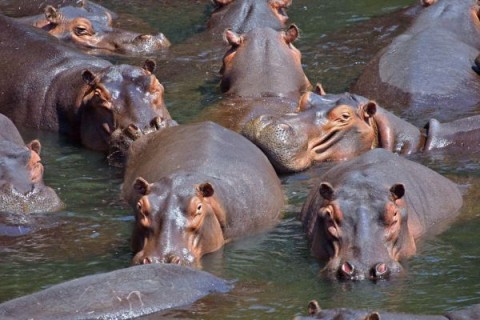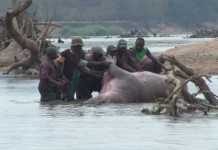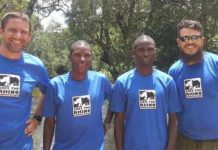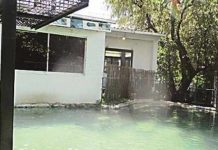The Nyika Plateau is an upland picturesque of rolling hills covered with grassland in a foggy atmosphere that provides tourists with a peaceful experience so different from the usual African wildlife experience.
Centred on the Nyika Plateau ‑ a high undulating montane grassland plateau which rises over 2 000 metres above the bushveld and wetlands of the Vwaza Marsh ‑ the area is classified as one of Africa’s centres of plant diversity as well as one of “Global 200” WWF priority regions for conservation, namely the Rift Valley Lakes, Zambezi-Miombo.
The Nyika Transfrontier Conservation Area (TFCA), traversing Malawi and Zambia, covers 19 280 square kilometres split into 4 182km2 on the Malawian side and 15 098km2 on the Zambian side. It is a haven to natural ecosystems and biodiversity unique to the two countries. It is also a major watershed for both Lake Malawi and the Luangwa River in Zambia.
Rivers flowing to the east are important for sustaining agriculture and in the maintenance of fish stocks for Lake Malawi that provides a livelihood to large populations of people who depend on the lake. The westward flowing Chire River is an important tributary of the Luangwa that caters for people in eastern Zambia.
The TFCA includes the Nyika National Park and Vwaza Marsh Wildlife Reserve in Malawi and the Nyika National Park, Lundazi, Mitenge and Mikuti Forest Reserves and Musalangu Game Management Area in Zambia.
Both the Nyika national parks of Malawi and Zambia have been classified as Important Bird Areas (IBA). The Nyika National Park in Malawi has the highest number of large mammals and the highest concentration of roan antelopes in Africa. It supports the world’s largest breeding population of blue swallow (Hirundo atrocaerulea) and is an area of high plant biodiversity with about 215 Orchid species.
The area has great aesthetic appeal with its suggestive African scenery of mists, grasslands and forests. It is blessed with an enormous, and internationally important, diversity of plants, mammals, birds and butterflies that enhances its appeal to visitors.
The Vwaza Marsh Wildlife Reserve is listed as IBA due to its biome-restricted birds.
In addition to the endemic and rare species, the basic stock of wildlife of the Nyika area includes the iconic species like elephants, leopards, buffalo and zebras, as well as lions with significant wildlife movement of wide-ranging species like Lichtenstein’s hartebeest, roan antelope, sable antelope, and eland across the international boundary.
These populations can only be sustained in the face of increasing poaching pressure if protection efforts across the international boundary are coordinated and enhanced through collaboration of the law enforcement and conservation agencies of the two countries that have a long ancient ethnic history of socio-political and economic interaction that transcend the modern political boundaries.
The Nyika TFCA is surrounded by four districts in Malawi, which are Rumphi (which harbours Nyika National Park and Vwaza Marsh Wildlife Reserve), Karonga and Chitipa (which also has part of Nyika National Park) as well as Mzimba (which is home to the Vwaza Marsh Wildlife Reserve). In Zambia, Chama and Muyombe districts border the Nyika National Park.
Unfortunately, for a long time the Nyika TFCA has been affected by various forces, which threaten its biological diversity and natural resources as well as curtails the sustainable and equitable development of its stakeholder communities.
Land outside the Nyika TFCA and the Vwaza Marsh Wildlife Reserve is mostly used for agriculture for smallholder farmers on land occupied according to customary tenure. So grazing of cattle comes with a price to the protected area. So too does tobacco farming the economic back bone of Malawi which puts pressure for more land on which to farm and to obtain wood to cure their tobacco leading to deforestation, especially on the Malawian side.
Other threats include limited knowledge of the presence and distribution of plants, mammals, birds, reptiles, amphibians, fishes and invertebrates in the Nyika TFCA and Vwaza Marsh Wildlife Reserve.
There is growing damage to forest patches brought about by fires that enter the protected areas during the dry season mainly as a consequence of human activity for smoking out of bees, or that which are set by poachers to attract game to the green flush of grass.
Wildlife experts say the most serious constraint on the viability of the Nyika TFCA as a tourism destination and overall biodiversity integrity is the depletion of the wildlife resources that are the prime attraction of all African protected areas.
“This has been due to the inability of the law enforcement staff to counter the plague of poaching that has decimated animal populations, the sheer size of the area,” notes a world Bank report which adds that “As a consequence wildlife numbers are low, and many species have been reduced to remnant populations or have been eliminated from areas where they were previously abundant.”
The Bank observes that the depletion of wildlife has serious ecological, political and economic consequences for the Nyika TFCA, and in particular for the objective of achieving sustainability through tourism and resource use.
The tourism infrastructure in the Malawi Nyika National Park is well established with roads, airfield and an up market lodge and other accommodation at Chilinda while the Zambian Nyika and Vwaza Marsh also have facilities that are developed. Tourism infrastructure in the Luangwa Valley is well developed, but concentrated to the south of the Musalangu. The frontier road between Vwaza Marsh and Lundazi is accessible for use by tourist traffic.
There is also a market mix of opportunities linking the Nyika TFCA with other nearby tourist attractions such as the South Luangwa National Park in Zambia that has well developed and diverse tourism infrastructure as well as the island and beach destinations of Lake Malawi.
The Nyika TFCA has widespread and important cultural heritage resources and artefacts including ancient dwelling sites with rock paintings such as at Fingira Rock, iron ore mines, iron smelting kilns and complex traditional and mystical iron working traditions.
Experts say there is a good basic knowledge of the biodiversity and natural systems of the Nyika National Park in Malawi that is sufficient to make it worthy of exploration by, for example, bird and orchid enthusiasts.
The scientific literature on the forest flora, bird and butterfly communities of the Nyika National Park in Malawi, three groups of organisms that have been particularly well studied, is broad and accessible.
The availability of this scientific baseline data is particularly conducive to long-term scientific research and monitoring and to demonstrating the commitment of both Malawi and Zambia to fulfilling their obligations under the Convention of Biological Diversity (CBD) treaty that both countries have signed.
The size and heterogeneous vegetation of Musalangu in Zambia implies significant biodiversity potential. The Nyika conservation area has potential to attract significant revenues from nature-based tourism for the two countries that have identified tourism as a potential economic growth sector.
Malawi’s geographic position between established tourism destinations such as Tanzania, Zambia and Mozambique is a potential advantage to tap into existing tourism streams.
Besides the attractive Lake Malawi, the country possesses other currently less developed areas of interest for tourism products. Malawi has five national parks, four wildlife reserves and three sanctuaries while Zambia has 19 national parks and 34 game management areas covering 33 percent of the country.

 JOIN DRIVERN TAXI AS PARTNER DRIVER TODAY!
JOIN DRIVERN TAXI AS PARTNER DRIVER TODAY!











